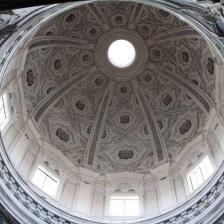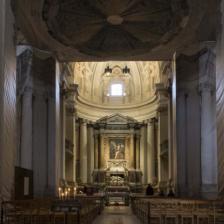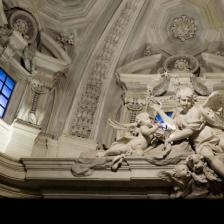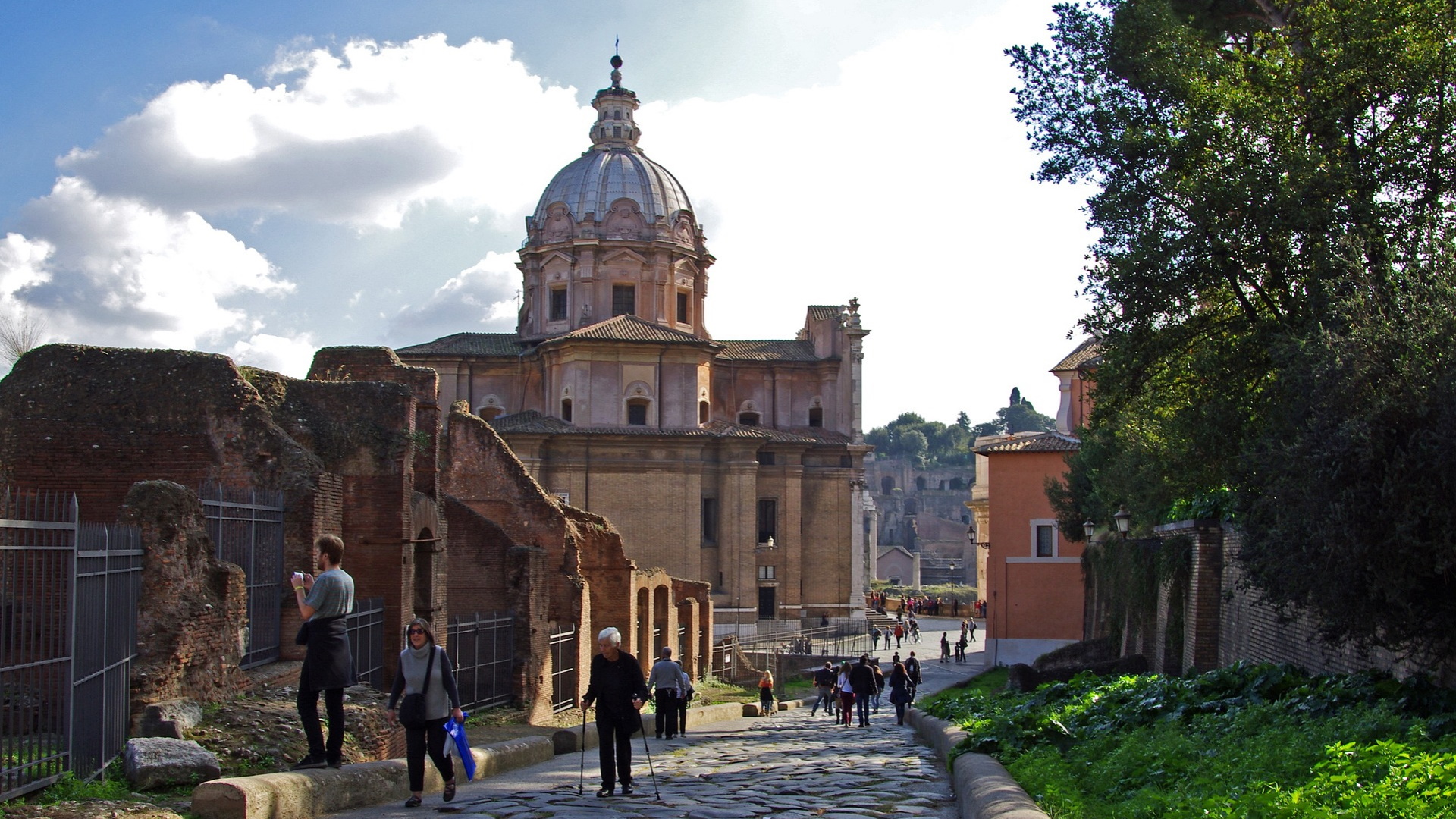
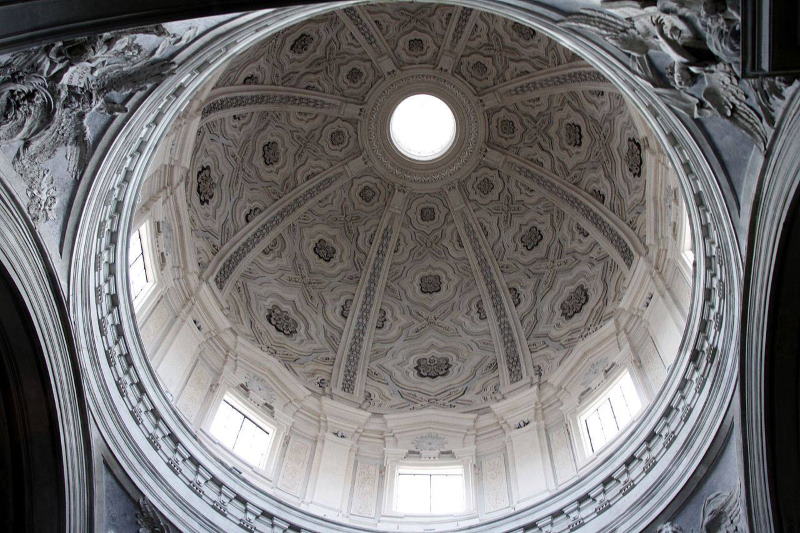
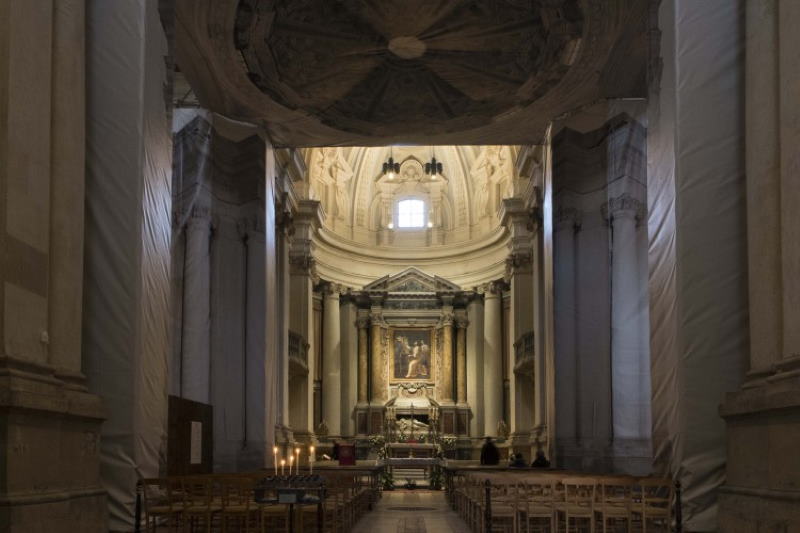
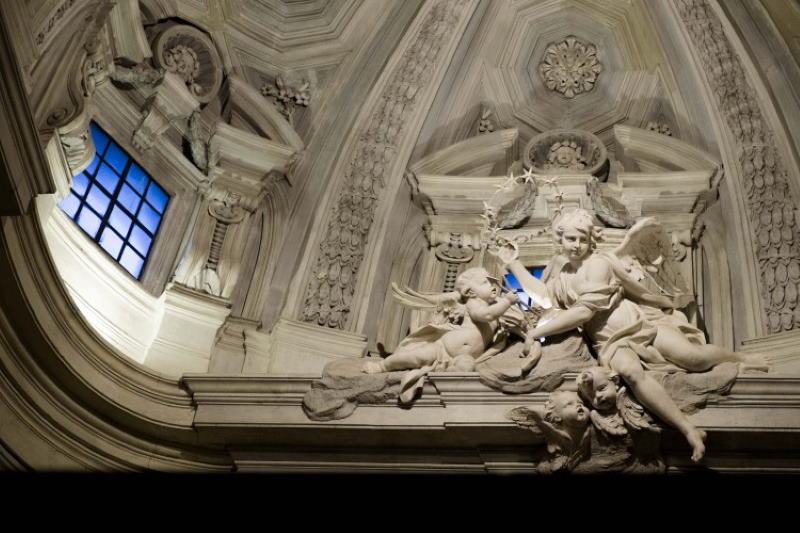
The church is now a masterpiece of the Roman Baroque style but its origins date back to the 7th century, when Pope Honorius I dedicated a sacred building to St Martina, a 3rd century Roman virgin martyr. It stands on the edge of the Roman Forum, on the remains of the “Secretarium Senatus”, a building possibly used as a court for the investigation of the activities of senators. In 1588 Pope Sixtus V donated the church to the Università dei Pittori di San Luca (the guild of painters) who also dedicated it to St Luke the Evangelist and decided to start its reconstruction.
The first project was drawn up by Ottaviano Nonni, known as Il Mascherino, but it was not implemented due to a lack of funds: a new church floor was installed at a higher level to create a crypt intended to house the tombs of the academics. The work was resumed only in 1635, thanks to the emotion and enthusiasm aroused by the discovery of the relics of St Martina, and above all to Pietro da Cortona, Principe (head) of the Academy, who had obtained from Cardinal Francesco Barberini the privilege of arranging at his expense the funerary chapel in the lower church, transformed into one of the most sumptuous chapels in the city. With the opening of Via dell’Impero in 1932, the church was spared from demolition and was left as an isolated structure surrounded by fragmentary ancient ruins.
The travertine limestone façade, slightly convex in the middle, is one of the most beautiful works by Pietro da Cortona. The dome is slightly set back from the façade and rests on a circular drum which is separated into eight sectors by pilasters. Each sector contains a large rectangular window and wonderful cornices decorated with the Barberini bee (from the family crest of Pope Urban VIII). The interior, harmonious and monumental with its profusion of bundles of pillars and Ionic columns, and austere in its whiteness and candor, has the form of a not-quite Greek cross: the longitudinal axis is in fact longer than the transverse one but both end with shallowly curved apses. The four pendentives of the dome bear stucco relief allegories of the four Evangelists. The lower church, which houses the memorial of Pietro da Cortona and works by well-known artists of the 17th century, including Alessandro Algardi and Sebastiano Conca, is instead richly decorated with polychrome marble and bronze ornaments. Dedicated to Santa Martina, by will of Pietro da Cortona it is administered by the Conservatory of Sant’Eufemia, which currently owns it. The upper church still belongs to the Accademia di San Luca.
Informationen
Saturday 9.00 to 18.00 (from October to April)
Saturday 9.00 to 20.00 (from May to September)
 Condividi
Condividi
Location
Um mehr über alle barrierefreien Dienste zu erfahren, besuchen Sie den Abschnitt barrierefreies Rom.












































